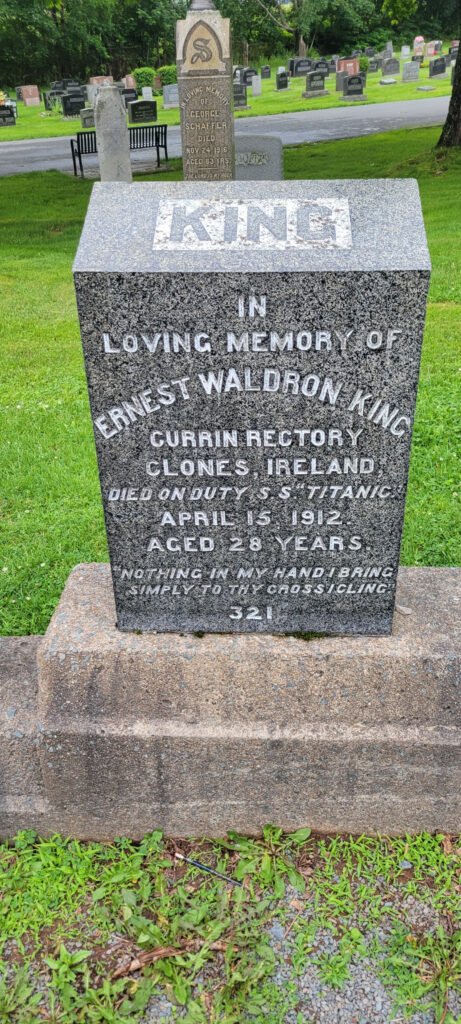
Story
In the early morning hours of April 15, 1912, the world witnessed one of history’s most tragic maritime disasters—the sinking of the RMS Titanic. Over 1,500 lives were lost when the “unsinkable” ship met its fate in the icy waters of the North Atlantic. Today, Halifax, Nova Scotia, serves as a reminder of that fateful night, as the final resting place for 121 of the Titanic’s victims.
Why the Victims were buried in Halifax

Immediately after the Titanic disaster, Halifax sprang into action. Its proximity to the sinking site made the city a crucial hub for recovery operations. Ships like the CS Mackay-Bennett and the SS Minia were dispatched from Halifax to retrieve the bodies of those who perished. The task of recovering and identifying the victims was a harrowing experience for all involved, marking a dark chapter in the city’s history.
Fairview Lawn Cemetery
Of the 328 bodies recovered from the Titanic, 150 were buried in Halifax, with 121 interred at Fairview Lawn Cemetery. This cemetery has since become a pilgrimage site for Titanic enthusiasts and history devotee. The rows of simple, uniform headstones, many bearing only a number or the inscription “Died April 15, 1912,” silently tell the stories of those who were lost.

Stories Behind the Stones
While many of the victims buried in Halifax remain unidentified, others have had their stories brought to light through attentive research and the efforts of dedicated historians. Among those laid to rest at Fairview Lawn are:
- John Jacob Astor IV: One of the wealthiest passengers aboard the Titanic, Astor’s body was recovered and identified by the initials sewn into his jacket. His grave in New York has a memorial plaque at Fairview Lawn in his honor.
- “Unknown Child”: For decades, the identity of a small child buried at Fairview Lawn remained a mystery. In 2007, through DNA testing, the child was identified as Sidney Leslie Goodwin, a 19-month-old English boy who perished with his entire family. SEE PICTURE ABOVE
- J. Dawson: A headstone bearing the name “J. Dawson” has drawn significant attention due to the popularity of James Cameron’s 1997 film “Titanic.” Many fans mistakenly believe it to be the grave of Leonardo DiCaprio’s fictional character, Jack Dawson. In reality, it belongs to Joseph Dawson, a crew member of the Titanic.

A Place of Reflection
Fairview Lawn Cemetery isn’t the only site in Halifax that commemorates the Titanic tragedy. Mount Olivet Cemetery and Baron de Hirsch Cemetery also hold the graves of Titanic victims, embedding the disaster deeply into the city’s history. Visitors often leave flowers, notes, and other tokens of remembrance at these cemeteries, honoring the memory of those who lost their lives.
Halifax’s Titanic Legacy
Halifax embraces its role in the Titanic story, leveraging its deep maritime roots. The Maritime Museum of the Atlantic features an extensive Titanic exhibit, showcasing artifacts recovered from the wreckage and sharing personal stories of the victims and survivors. This collection offers a glimpse into the human side of the disaster, moving beyond the cold statistics.
As we reflect on the legacy of the Titanic, the graves in Halifax remind us of life’s fragility and the enduring impact of this historic tragedy. The final resting place of these 121 souls serves as a place of solemn reflection, testifying to the lives lost and the city’s crucial role in their story.
